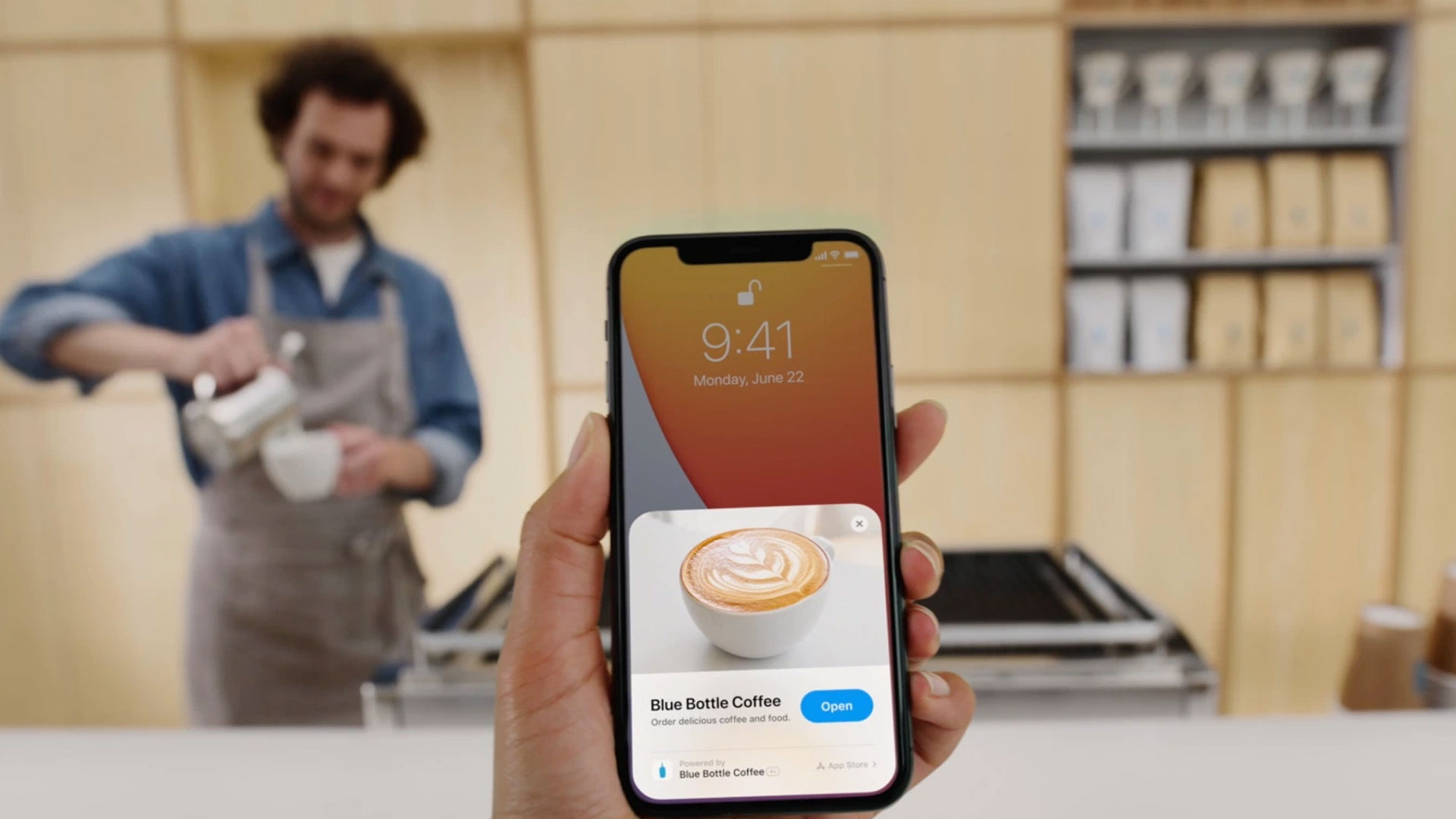Published by
App Clips is set to change how a business’s brand shows up digitally for its customers. App Clips will, in essence, allow users to have a native app experience available in critically contextual moments without requiring a download from the app store.
So now I’ve got you thinking: “What could I do with this type of opportunity? What are the key activities that users do in our app that could be offered up in this manner?” Hold that thought. We’ll get back to that in a bit.
First Things First, What Are App Clips?
App Clips are “clips,” or parts of a full native app, that are exposed to users via almost any touchpoint that can distribute a URL. They contain a specific flow and are meant to enable users to conduct discrete pieces of business when those bits of business are most relevant. They can be accessed via QR codes, map cards in Apple Maps, links in iChat, web links in the Safari browser, NFC touchpoints, and Apple’s new proprietary Clip Codes, which combine the utility of QR codes and NFC. As of this past September 16, iOS 14 became available to download.
App Clips are one of the most important advancements to come to mobile from Apple in multiple technology generations. As more and more brands enable this solution, users will come to expect these functionalities throughout the physical environments where they eat, shop, vacation, get educated and relax. Adapting to their existence will be critical for brands to be on the forefront of mobile technology in the short term, but they will become table stakes very quickly.
When Might an App Clip Make Sense for My Business?
A business may wish to consider developing and releasing an App Clip when it has a component in its app that has high context and utility or is very useful in a specific place. Experiences like ordering or purchasing outside the home, signing up for loyalty programs after transactions, ordering services at a table or other location, checking in to a place, or controlling a secondary device like a room lock or an internet connected device are all very likely candidates for exposure via an App Clip. If a business has seen fit to develop a function in its app and it is dependent upon context, it’s worth giving it a good long look with App Clips in mind.
And let’s not forget positioning is critical. An App Clip is, essentially, a call to action one step removed from the device, so users need to know why they would want to interact with it. Businesses need to ask two critical questions: What functions do they want to expose, and where do they place access points?
Determining function is a matter of understanding the value a brand provides its customers. What are the main value propositions of the business, and how is that value accessed through its app? The most critical and context-dependent elements of a business’s app are prime candidates for exposure.
Where Might an App Clip Be Helpful for My Consumers?
When a business has decided what functions in its app it wants to expose, it should then consider the context where that function is most useful. Is that function most useful in transit to that business’s location? Placing a link in the business’s card in Apple Maps is probably the best way to go. Will users need to interact with a piece of hardware in the physical place of business, such as a kiosk, a lock, a locker or other device that wants some level of authentication or personalization? Then a Clip Code, QR Code or NFC touchpoint is the way forward. Perhaps a business wants to extend purchasing capabilities or enable loyalty interactions after purchase? Clip Codes located near the merchandise in question or NFC touchpoints at Point of Sale may be the ticket. If a business needs to leverage physical marketing in a specific place to enable interactions or purchasing, Clip Codes are the answer.
In the hierarchy of personalization, an app installed on a user’s device is the gold standard for brands seeking to interact with their customers digitally. It’s a generally acknowledged fact of commerce that a known customer is more valuable to a company than an unknown one, but customers at a point of sale are typically disinclined to stop and fill out paperwork, and they don’t always enter into a transaction having already joined that brand’s loyalty program.
Why Would My Brand Want to Create an App Clip?
By leveraging an App Clip as a part of a mobile-pay or ordering flow at the point of sale or even the point of browse — a new moment enabled by digital extensions attached to products — businesses can transition easily into a loyalty signup experience that is enabled as long as the clip persists on the user’s device. Given that clips persist for at least eight hours, users can re-engage at their leisure, and businesses will even have access to a special class of notification to assist with reuptake.
Brands also gain access to greater demographic and analytic data about the efficacy of their marketing and the associated utilitarian aspects of their app.
QR codes are an early and, let’s be frank, unattractive means of extending the physical into the digital. In typical Apple form, Clip Codes are their answer to QR’s limitations. Clip Codes, at the very least, do no harm to a brand’s marketing materials and enable greater utility than the brochureware on a website typically attached to QR codes. This is only true if brands ensure their marketing materials are explicit in the value and utility they advertise, and they deliver on that promise. If the brand has cleared that hurdle, then attaching precision analytics to that well-formed marketing is the logical next step.
Businesses need to ensure they track not only conversion rates of unknown to known users, but also pay attention to how often they enable even anonymous commerce. The right of users to engage in commerce anonymously is fast becoming something brands ignore at their extreme peril.
The following is my personal philosophy, and reasonable and intelligent professionals can and do disagree: It is more important to enable utility and commerce than it is to harvest user data or convert an anonymous user to a member of a brand’s loyalty program. The frictional overhead introduced by demanding user information as a condition of access is anathema to the design principle underlying App Clips. Apple explicitly contraindicates login or signup as a condition of use, and the zeitgeist is generally opposed to personal and demographic information as the coin of the realm at this time.
In Summary…
All that is to say, provide utility and value first, and conversions will come. Users that have a good experience with a brand and feel like they got use out of its App Clips will retain the clip on their device longer with re-use and are more likely to convert to full users and permanent members of that brand’s user base over time.
This article was published in the December 2020 issue of InBusiness Magazine.




